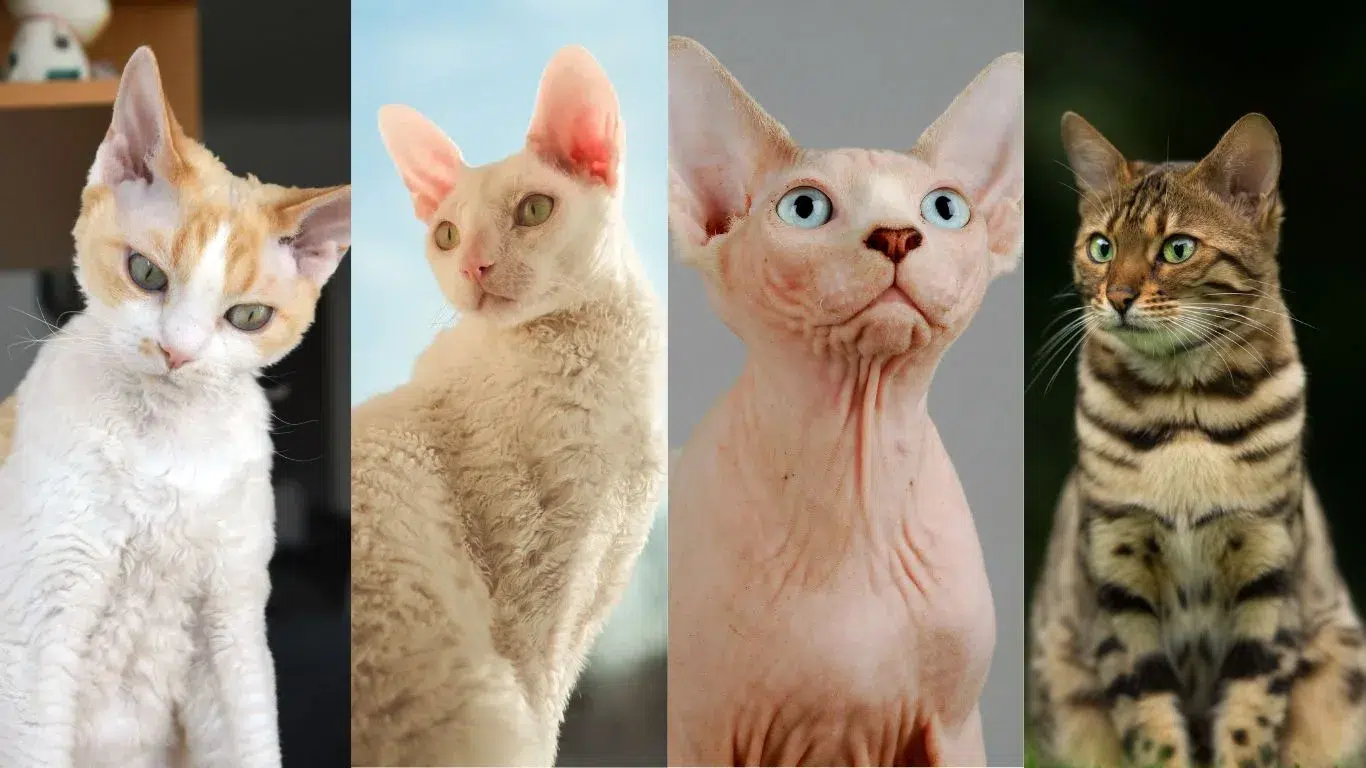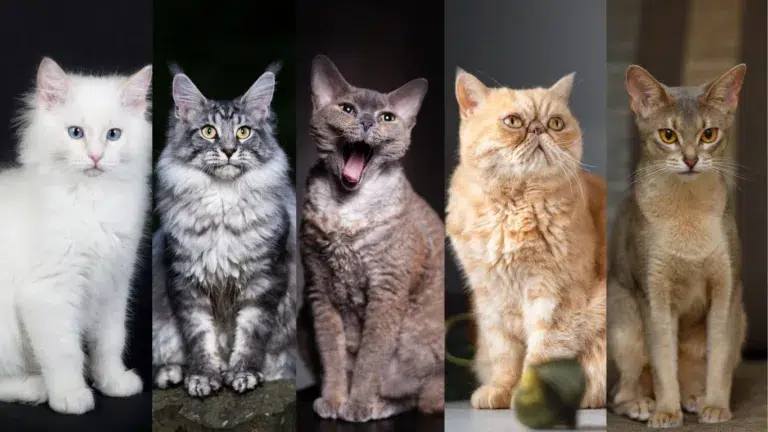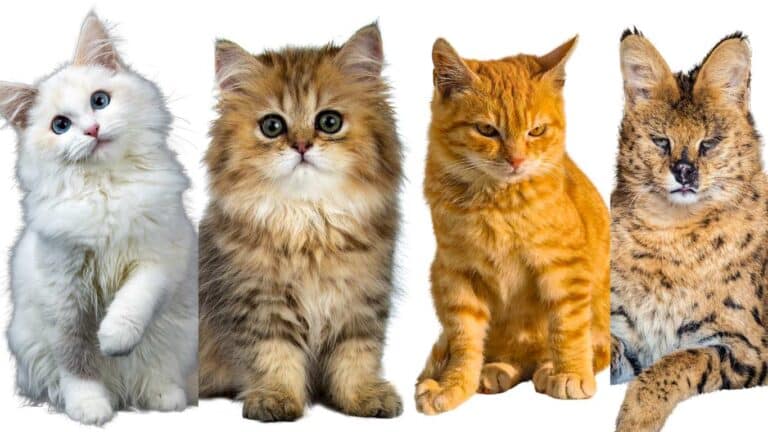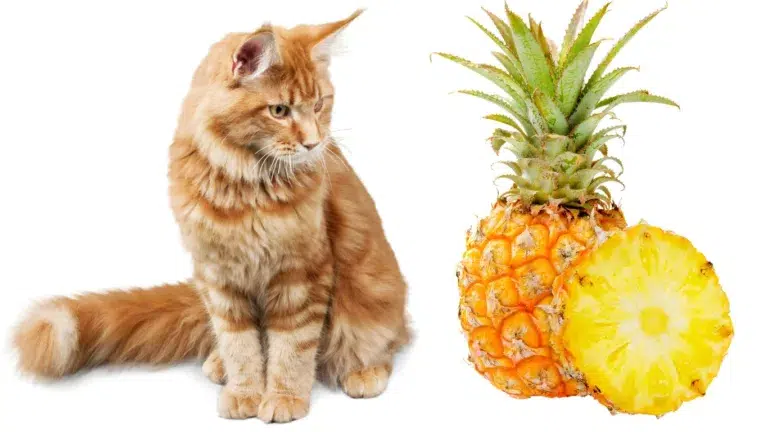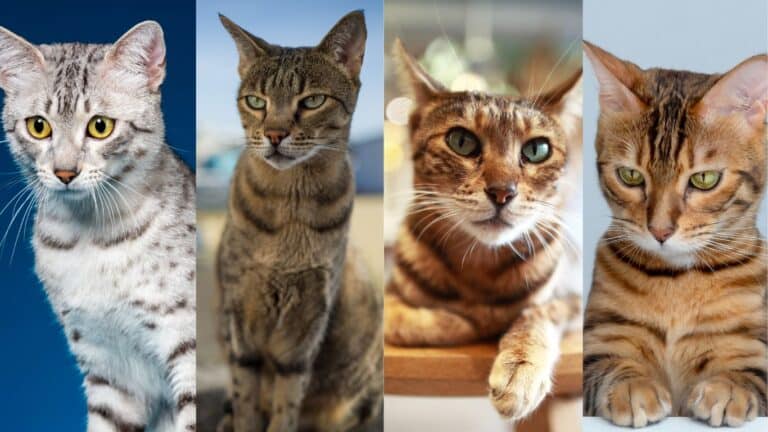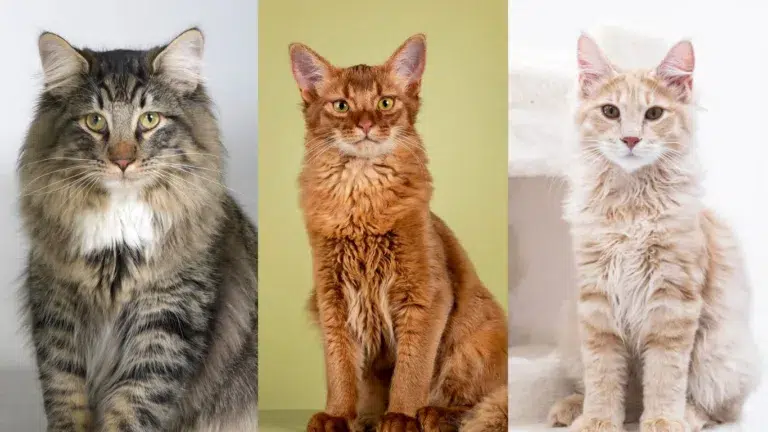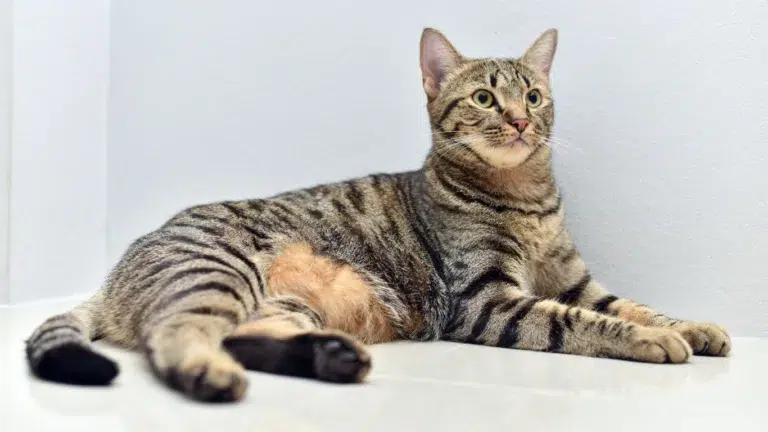If you’re tired of constantly cleaning up cat hair and dealing with allergies, we have good news for you. There are several low shedding cat breeds that can help keep your home fur-free. These breeds produce fewer allergens and shed less hair, making them ideal for allergy sufferers and those who prefer a clean and fur-free environment.
Core Insights To Low Shedding Cat Breeds:
Are There Hypoallergenic Cat Breeds? No, but Low-Shedding Breeds Can Help
Despite the common use of the term “hypoallergenic,” there are no cat breeds that are completely hypoallergenic. The allergenic protein Fel d 1 is present in all cats, regardless of their breed. However, some cat breeds shed less hair, which can reduce the spread of allergens and potentially lessen allergy symptoms for some individuals. These low shedding cat breeds may be a good option for people with allergies who still want to have a cat in their home.
| Breed | Shedding Level | Allergenicity |
|---|---|---|
| Sphynx | Very low | Low |
| Cornish Rex | Low | Low |
| Devon Rex | Low | Low |
| Bengal | Low | Medium |
While it’s important to note that these breeds still produce Fel d 1 allergens, their minimal shedding can help reduce allergen levels in your home. This may result in fewer allergy symptoms for some individuals. However, it’s crucial to consult with your allergist or doctor before bringing any cat into your home, as individual reactions may vary.
Managing Cat Allergies: Tips for Allergy Sufferers
If you have cat allergies, there are several steps you can take to manage your symptoms. Avoiding contact with cats is the best way to prevent an allergic reaction. However, if you can’t resist having a furry friend in your home, there are cat allergy treatments available that can help alleviate your symptoms.
Antihistamines can be used to reduce sneezing, itching, and nasal congestion caused by cat allergies. Talk to your doctor or allergist about which antihistamine is right for you. Low Shedding Cat Breeds might be an alternative consideration for those with allergies.
Steroid sprays can help reduce inflammation in the nose and throat, providing relief from allergy symptoms. These sprays can be prescribed by a healthcare professional.
Decongestants can temporarily relieve nasal congestion, but they should be used with caution, as they can have side effects. It’s important to follow the instructions and consult a healthcare professional before using decongestants.
Moreover to medication, there are lifestyle changes you can make to reduce allergens in your home and minimize exposure to cat dander. Regularly washing your hands can help remove allergens from your skin. Using a lint roller to remove cat hair from your clothes and vacuuming and dusting frequently can help eliminate allergens from your living space. Low Shedding Cat Breeds could be a beneficial choice for reducing the presence of allergens.
Keeping your cat groomed can also help reduce the amount of allergens they produce. Regular brushing and bathing can help remove loose hair and dander, making it easier for allergy sufferers to coexist with their feline companions.
“Managing cat allergies requires a combination of avoidance measures and treatment options. By taking steps to reduce your exposure to cat allergens and seeking appropriate medical advice, you can still enjoy the company of a cat while managing your allergies.”You can’t connect the dots looking forward; you can only connect them looking backwards. So you have to trust that the dots will somehow connect in your future.
To summarize, here are some tips for managing cat allergies:
- Avoid contact with cats as much as possible.
- Consider using cat allergy treatments such as antihistamines, steroid sprays, or decongestants.
- Wash your hands regularly to remove allergens.
- Use a lint roller to remove cat hair from your clothes.
- Vacuum and dust frequently to eliminate allergens from your home.
- Keep your cat groomed through regular brushing and bathing.
By following these tips, you can reduce allergens in your home and better manage your cat allergies.
Sphynx: A Hairless Breed for Allergy Sufferers
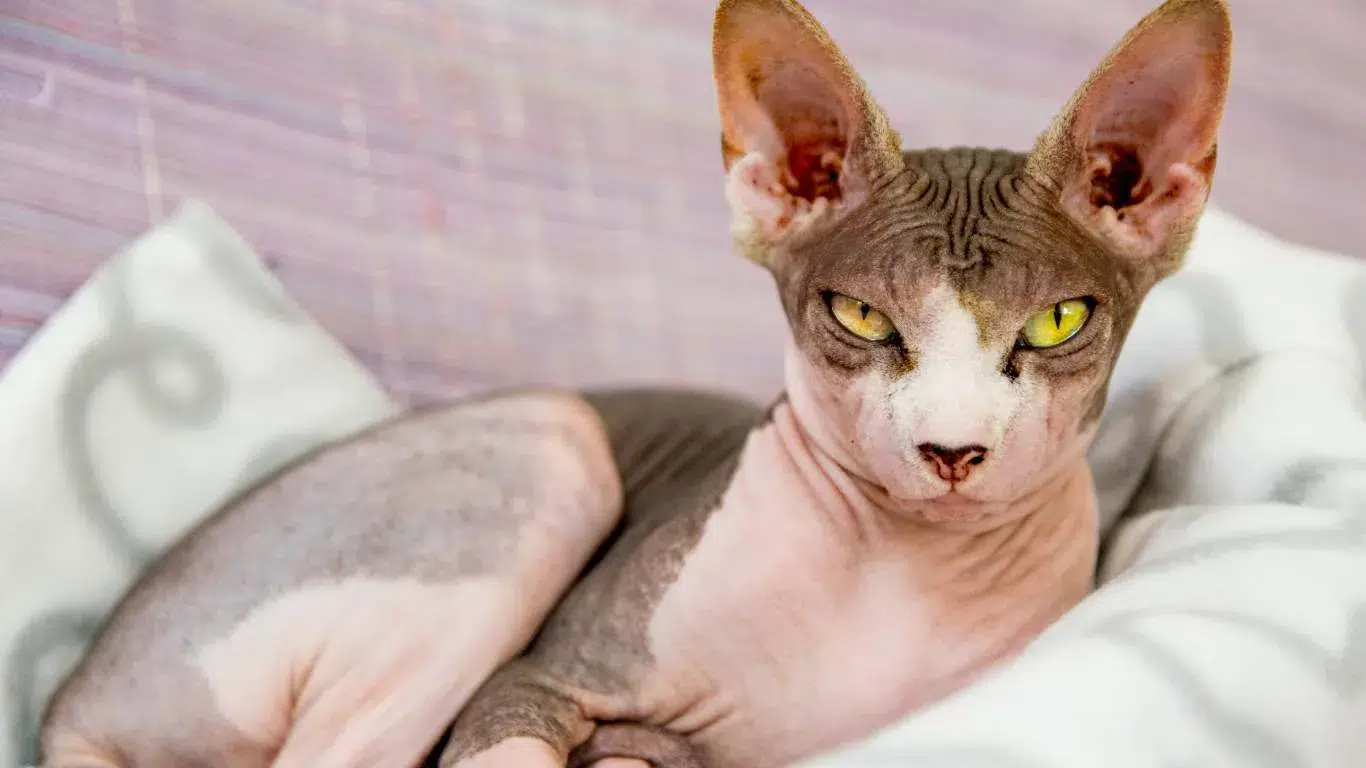
The Sphynx is a highly recommended cat breed for allergy sufferers. Known for their hairless appearance, Sphynx cats actually have a fine layer of fuzz on their body. Despite being devoid of fur, Sphynx cats produce fewer allergens, making them a good choice for individuals with allergies.
Although the lack of fur reduces allergen presence, it’s important to note that even hairless cat breeds can still produce the Fel d 1 allergen in their saliva and skin. Regular grooming and bathing are necessary to keep their skin clean and minimize allergen buildup.
Benefits of Owning a Sphynx Cat:
- Low allergen production
- Hypoallergenic qualities
- No shedding
Despite their unique appearance, Sphynx cats are known for their friendly and affectionate nature. They form strong bonds with their owners and enjoy being the center of attention. If you’re looking for a cat breed that combines a distinctive appearance with allergy-friendly qualities, the Sphynx cat is an excellent choice.
Cornish Rex: A Curly-Coated Low-Shedding Breed
The Cornish Rex is a popular low-shedding cat breed known for its unique curly coat. Unlike most cats that have a double coat, the Cornish Rex only has a soft, curly undercoat. This distinctive feature significantly reduces shedding, making them an ideal choice for individuals who prefer a cat that doesn’t leave excessive hair around the house.
The Cornish Rex’s curly coat offers several advantages. Not only does it minimize the amount of hair shed, but it also provides a soft and silky texture that many cat owners find irresistible. The lack of an outer coat means that the hair doesn’t mat or tangle easily, resulting in less grooming time and effort.
Regular brushing is still essential for maintaining the health and condition of the Cornish Rex’s coat. Not only does brushing help remove any loose hair, but it also stimulates the skin and promotes blood circulation. Additionally, interactive playtime with your Cornish Rex cat is an excellent way to keep their coat healthy and maintain their overall wellbeing.
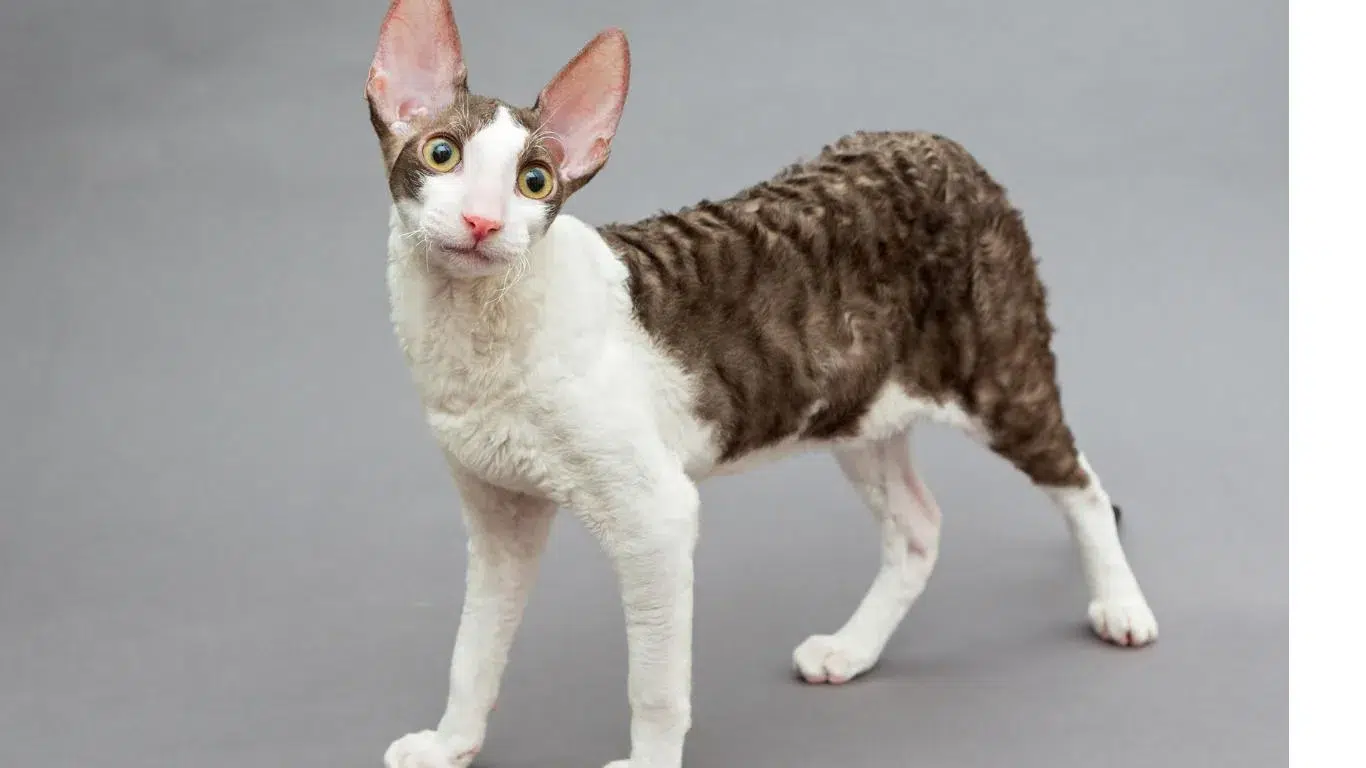
“Managing cat allergies requires a combination of avoidance measures and treatment options. By taking steps to reduce your exposure to cat allergens and seeking appropriate medical advice, you can still enjoy the company of a cat while managing your allergies.”You can’t connect the dots looking forward; you can only connect them looking backwards. So you have to trust that the dots will somehow connect in your future.
Characteristics of the Cornish Rex Breed
The Cornish Rex is a small to medium-sized cat breed with a slender and elegant body. Apart from their curly coat, they are known for their large ears, high cheekbones, and expressive eyes. They have a playful and affectionate nature, making them an excellent choice for families and individuals looking for an engaging and loving companion.
| Characteristics | Description |
|---|---|
| Coat | Curly, soft undercoat |
| Size | Small to medium-sized |
| Temperament | Playful, intelligent, affectionate |
| Activity Level | Highly energetic and active |
| Health | Generally healthy with no specific breed-related health issues |
The Cornish Rex is undoubtedly an exceptional breed, combining a low-shedding coat with a charming and affectionate personality. If you’re looking for a cat that stands out with its curly coat and fills your home with love and playfulness, the Cornish Rex may be the perfect choice for you.
Devon Rex: Another Curly-Haired Low-Shedding Breed
The Devon Rex is another low-shedding cat breed with a curly coat. Similar to the Cornish Rex, the Devon Rex only has an undercoat of soft, curly hair. They are known for their affectionate nature and tight bond with their owners. However, their love and attention can also mean more hair and allergens on your clothes. Regular grooming and cleaning are important to minimize the spread of allergens.
Why Choose a Devon Rex?
The Devon Rex cat breed is a popular choice for those seeking low-shedding companions with a unique appearance. Their curly coat sets them apart from other breeds, making them both adorable and suitable for allergy sufferers.
Personality and Bonding
Devon Rex cats are known for their affectionate and loving nature. They form tight bonds with their owners and enjoy being involved in their daily activities. Their playful and mischievous nature adds charm to their personality, making them delightful companions.
Grooming Tips
To minimize the spread of allergens and keep your Devon Rex’s coat healthy, regular grooming is essential. Here are a few tips:
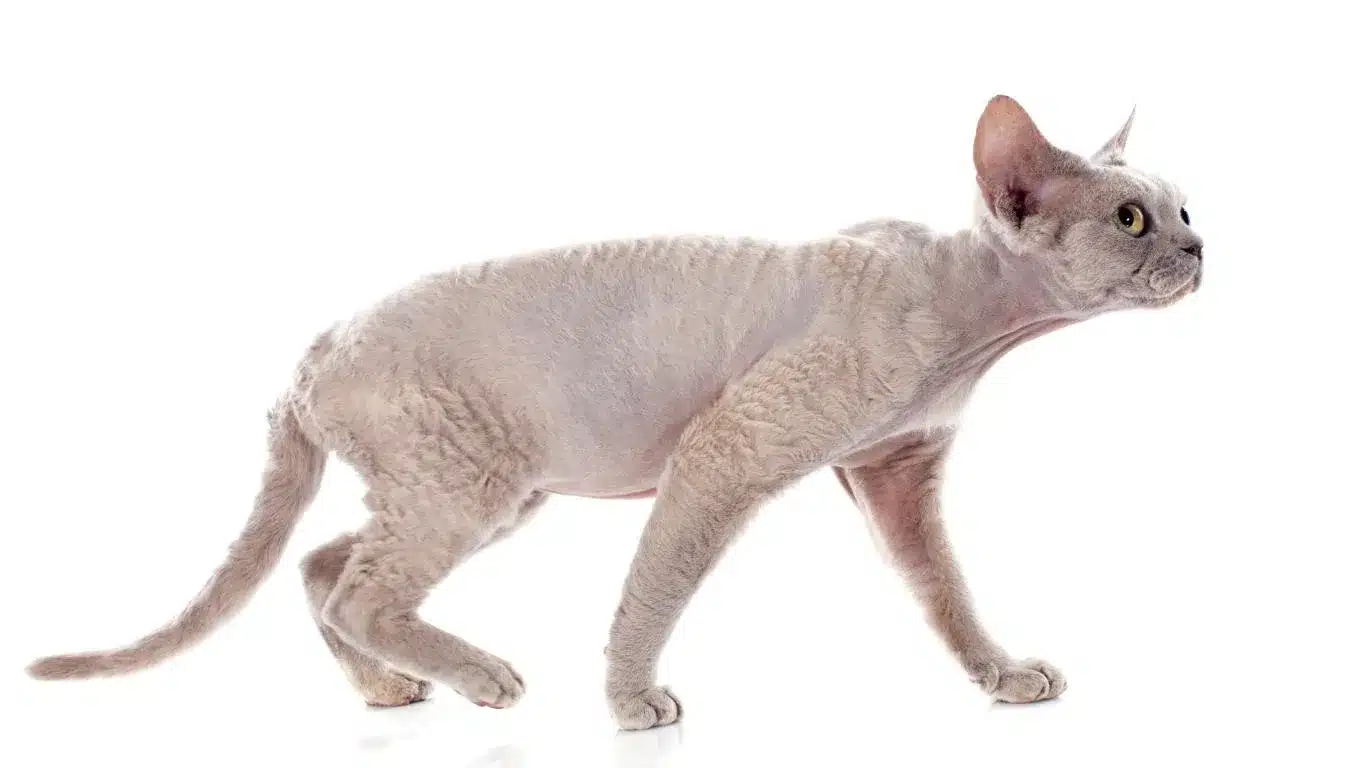
- Brush their coat gently with a soft brush or a grooming glove to remove loose hair.
- Bathe your Devon Rex occasionally to keep their skin clean and reduce allergens.
- Trim their nails regularly to prevent scratching and damage to furniture.
By following these grooming practices, you can keep your Devon Rex looking their best while minimizing allergens and shedding.
Overall, the Devon Rex cat breed is an excellent choice for those looking for a low-shedding cat with a distinctive appearance and an affectionate personality.
Bengal: A Beautiful Low-Shedding Breed with Unique Coat Patterns
The Bengal cat breed is a stunning choice for those looking for a low-shedding companion with unique coat patterns. Reminiscent of their wild ancestors, Bengal cats sport coats that are truly one-of-a-kind.
Known for shedding less frequently than other breeds, Bengals require less maintenance when it comes to grooming and keeping your home fur-free. This makes them a great option for individuals who prefer a cleaner living environment.
Highly Active and Playful
Bengals are highly active and playful cats, making them an excellent choice for those seeking an engaging and intelligent companion. These cats love to play and require regular exercise and mental stimulation to keep them happy and healthy. Whether it’s chasing toys, exploring their surroundings, or solving interactive puzzles, Bengals thrive when given opportunities to unleash their natural curiosity and energy.
Awe-Inspiring Beauty

One of the most remarkable features of Bengal cats is their breathtaking beauty. Their unique coat patterns set them apart from other cat breeds, with spots and marbling reminiscent of their wild ancestors. From their striking rosettes to their stunning coat color variations, such as brown, silver, and snow, Bengal cats are truly a sight to behold.
Siamese: Low-Maintenance Coat and Distinctive Voice
Siamese cats are known for their low-maintenance coat, making them an easy breed to care for. With regular brushing to remove dead hair, Siamese cats shed less, keeping your home cleaner and minimizing the need for extensive grooming.
But the Siamese breed has more to offer than just a low-maintenance coat. These cats have distinctive coat markings, including a light-colored body and darker points on their ears, face, paws, and tail.
With their striking blue eyes and sleek body, Siamese cats are truly eye-catching. They have a unique voice as well, known for their loud and vocal nature. Siamese cats are not afraid to express themselves and will let you know when they want attention or have something to say.
The Siamese Cat’s Distinctive Voice
Siamese cats are renowned for their distinctive voice. Their vocalizations range from soft and melodic to loud and demanding. Their unique voice adds an element of charm and personality to their already striking appearance.
“Siamese cats are like living with a symphony of melodious voices. Their expressive meows and trills can be heard throughout your home, creating a vibrant and lively environment.” – Siamese cat ownerYou can’t connect the dots looking forward; you can only connect them looking backwards. So you have to trust that the dots will somehow connect in your future.
If you’re looking for a cat breed that not only has a low-maintenance coat but also has a distinctive appearance and voice, the Siamese cat may be the perfect choice for you.
| Siamese Cat Breed | Low-Maintenance Coat | Distinctive Voice |
|---|---|---|
| Easily cared for with regular brushing | Sheds less hair once dead hair is removed | Expressive, unique vocalizations |
| Striking coat markings and bright blue eyes | No excessive grooming required | Adds charm and personality to your home |
Russian Blue: Minimal Shedding and Gentle Temperament
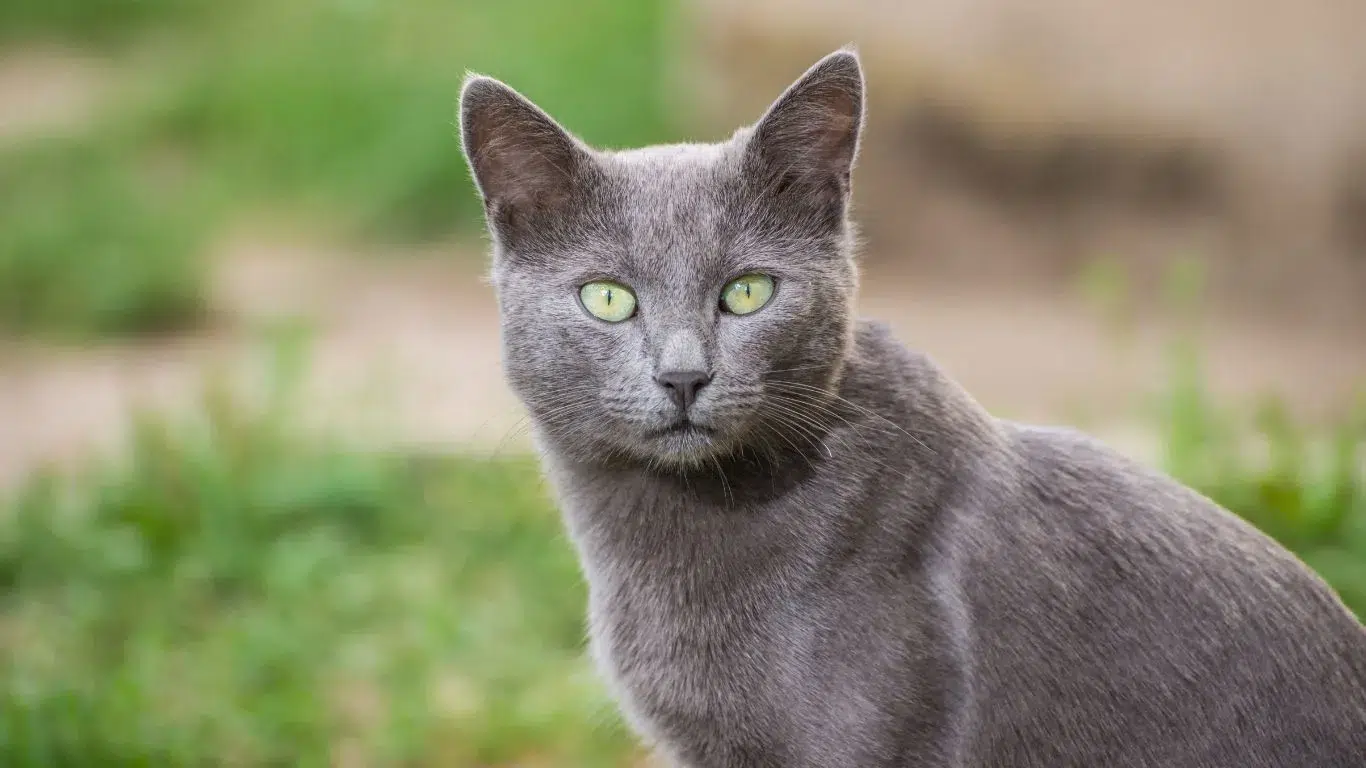
If you’re looking for a cat breed that requires minimal shedding and has a gentle temperament, the Russian Blue is an excellent choice. These medium-sized cats are known for their soft, dense double coat and their graceful build. With their distinctive silver-blue coat color, they are truly a beautiful and elegant breed.
One of the key advantages of the Russian Blue is their minimal shedding. Unlike many other cat breeds, Russian Blues shed less hair throughout the year. Instead, they have a specific shedding period that occurs once or twice a year. This means less time spent cleaning up loose fur and a more fur-free home for you.
Furthermore, Russian Blues have a gentle and affectionate temperament. They are known to be friendly, loving, and intelligent cats. Their gentle nature makes them easy to train and handle, making them an ideal choice for families and individuals alike.
Whether you have allergies or simply prefer a clean and fur-free environment, the Russian Blue is a perfect fit. Their minimal shedding and easy grooming make them an attractive option for anyone seeking a Low Shedding Cat Breeds. Low Shedding Cat Breeds like the Russian Blue offer the perfect combination of beauty, intelligence, and low maintenance.
Characteristics of the Russian Blue:
- Soft, dense double coat
- Minimal shedding once or twice a year
- Gentle and affectionate temperament
- Medium-sized with a graceful build
- Distinctive silver-blue coat color
If you’re ready to welcome a Russian Blue into your home, be prepared to provide them with plenty of love, attention, and playtime. They thrive in an environment where they can engage with their human companions and receive affection.
So, if you’re looking for a cat breed that combines minimal shedding with a gentle temperament, look no further than the Russian Blue. These beautiful and loving cats are sure to bring joy and companionship to your home.
Oriental Shorthair: Low-Shedding Relative of the Siamese
The Oriental Shorthair is a low-shedding breed closely related to the Siamese. They have an elegant and slender body, similar to the Siamese, but come in a wide range of colors and patterns. Their short coat is easy to groom and they are known for being loving and entertaining. However, they can become sensitive if ignored or left alone for long periods of time.
Join the Pet Planet Diaries
Sign up for our newsletter to get the latest tips, stories, and exclusive insights into the wonderful world of pets.
Final Remarks
In your search for cat breeds that don’t shed much, you’ve discovered a variety of low-shedding options that can help create a fur-free home. While there are no completely hypoallergenic cat breeds, these low-shedding breeds produce fewer allergens and shed less hair, making them an excellent choice for individuals with allergies.
The Sphynx, Cornish Rex, Devon Rex, Bengal, and other low shedding cat breeds not only offer beauty and unique characteristics but also have low-maintenance coats. By choosing one of these breeds, you can enjoy the companionship of a cat without the constant worry of excessive shedding and allergens.
Whether you’re looking for a hairless Sphynx, a curly-coated Cornish Rex, or a playful Bengal with unique coat patterns, these low-shedding breeds offer a fur-free home and a more enjoyable cat-owning experience. Remember to practice regular grooming and cleaning to minimize the spread of allergens and keep your low-shedding cat healthy and happy.
FAQ
Are there cat breeds that don’t shed much?
Yes, there are several low shedding cat breeds that can help keep your home fur-free.
Are there completely hypoallergenic cat breeds?
No, there are no completely hypoallergenic cat breeds. All cats produce the allergenic protein Fel d 1, but some breeds may shed less hair, reducing the spread of allergens.
How can I manage cat allergies?
To manage cat allergies, you can avoid contact with cats, use cat allergy treatments, regularly wash your hands, use a lint roller to remove hair from clothes, vacuum and dust frequently, and keep your cat groomed.
Are Sphynx cats hypoallergenic?
While Sphynx cats produce fewer allergens because they don’t have fur to carry them, they can still produce the Fel d 1 allergen in their saliva and skin.
What is special about Cornish Rex cats?
Cornish Rex cats have a curly coat, which reduces shedding and makes them a good choice for those who prefer a cat that doesn’t leave excessive hair around the house.
What about Devon Rex cats?
Devon Rex cats also have a curly coat and shed less hair. They are known for their affectionate nature and tight bond with their owners.
Do Bengal cats shed a lot?
No, Bengal cats shed less frequently than other breeds and require less maintenance. They are highly active and playful, making them an engaging and intelligent companion.
What about Siamese cats?
Siamese cats have a low-maintenance coat that can be easily cared for with regular brushing. They shed less hair once their dead hair is removed.
Do Russian Blue cats shed much?
No, Russian Blue cats have minimal shedding and easy grooming. They have a gentle temperament and a distinctive silver-blue coat color.
Are Oriental Shorthair cats related to Siamese?
Yes, Oriental Shorthair cats are closely related to Siamese cats. They have a low-shedding short coat and come in a wide range of colors and patterns.

